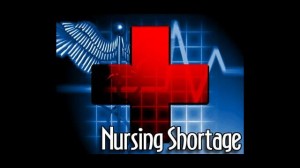By Rose O. Sherman, EdD, RN, FAAN
I am often asked the question as to whether there is still a nursing shortage in the United States. A simple yes or no answer does not tell the whole story of what is happening in health care today and how it has impacted the nursing workforce. What is also true is that the answer in the short-term may be different than it could be in the very near future. Five major trends to consider include:Nurses are delaying Retirement
Nursing especially in acute care hospital settings is physically demanding. Historically, most nurses retired in their early sixties. With the downturn in the economy, nurses today are postponing retirement. Recent data from the Bureau of Health Professions indicates that 44.7% of the RN workforce are over the age of 50. The majority of this group are still working fulltime and interestingly 33.3% of those over the age of 75 reported that they are still working in some capacity as registered nurses. When surveyed about retirement plans, most anticipated that they would continue working across the next five years.
Today’s New Graduates are Younger
A new and unexpected trend in the nursing workforce is the number of Generation Y nurses who are entering the profession at a younger age (23-26). Many of the current nursing shortage/workforce models were built using data from the 1990s at a time when Generation X nurses were entering the profession at an older age and often as a second career. Their anticipated work careers were expected to be much shorter given their age of entry into the profession.
In a recent study reported in Health Affairs, Dr. Peter Buerhaus and his non-nurse colleagues who are nationally known for analyzing nursing workforce data, reported a startling turnaround in this trend between 2002 and 2009 citing a 62% growth in the younger age group.
The Nursing Supply has Increased
Worried about pending nursing shortages, there has been a full court press to increase the number of new graduates. California alone spent $95 million dollars in federal, state and private funds over the past decade to double the number of new graduates. More than 250,000 nurses entered the workforce between 2007 and 2008, the most significant two year increase in 30 years.
New Graduates are having Difficulty Finding Jobs
The last thing most new graduates expected to worry about when they entered their nursing programs was finding employment when they graduated. The economic downturn over the past two years has quickly changed what was once a wide open job market for new graduates. In many but not all geographic areas, hospitals have significantly reduced hiring. With the availability of experienced nurses, nurse leaders are more cautious about employing new graduates when they do have vacancies. Interestingly, these trends vary by geographic region, type of setting and by the education level of the RNs. The American Association of Colleges of Nursing reported that 88% of BSN graduates had job offers in 2010 within 4-6 months of graduation.
Health Reform and an Aging Population could Change Demand
Two of the biggest unknowns at this point in time is what could happen with implementation of significant health care reform and how will the surge of population over the age of 80 impact the need for nursing. A clear direction for future reimbursement will be to prevent hospitalization as this is the single largest portion of the health care spending. It is likely that there will be a significant shift in RN employment from acute care to community-based settings. A significant shortage of physicians especially in primary care is anticipated by 2020. More RNs r expected to return to school for graduate degrees as the need for advanced practice nurses will grow.
Looking toward the Future
Before declaring that the nursing shortage is over as some have, it is important to watch the trends that can quickly shift. What we do know is that a significant number of Baby Boomer nurses are likely to retire by 2020 and this will leave a huge gap in the workforce. A recent report from a bipartisan workforce policy commission projected an 11.8% increase in jobs in healthcare between this year and 2018. We also know from shortages in the 1980s and 1990s that if there is a positive change in the economy, many nurses may reduce their work hours. A rapidly aging population will require nursing care across the continuum of settings from hospitals to long-term care at a level much different than we see today.
In the not to distant future, most nurse leaders believe that we will experience another nursing shortage. It is likely that the newest members of our profession who are struggling to find employment today will again be in great demand. The long-term career opportunities for nursing in general look very bright when compared with other economic sectors.
I would be very interested in your comments and thoughts on this topic.
Read to Lead
American Association of Colleges of Nursing (April 2011). Nursing Shortage Fact Sheet – NrsgShortageFS.
Bipartisan Policy Center (October 2011). The Complexities of National Health Workforce Planning – Workforce Study – Bipartisan Policy Committee
Bureau of Health Professions (2008). National Nursing Sample Executive Summary. – rnsurveyinitial2008
Auerbach, D.I., Buerhaus, P.I. & Staiger, D.O. (2011). Registered nurse supply grows faster than project amid new entrants ages 23-26. Health Affairs, 30(12), 2286-2292.
© emergingrnleader.com 2012



 LinkedIn
LinkedIn Instagram
Instagram